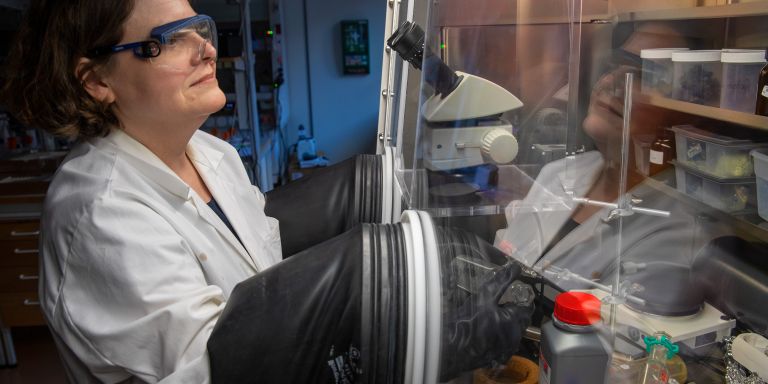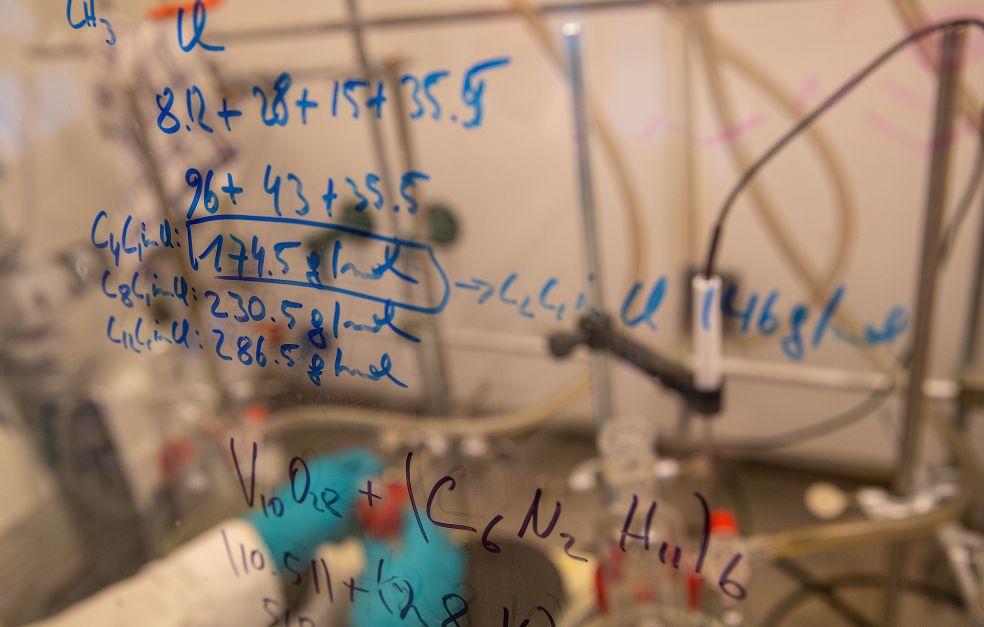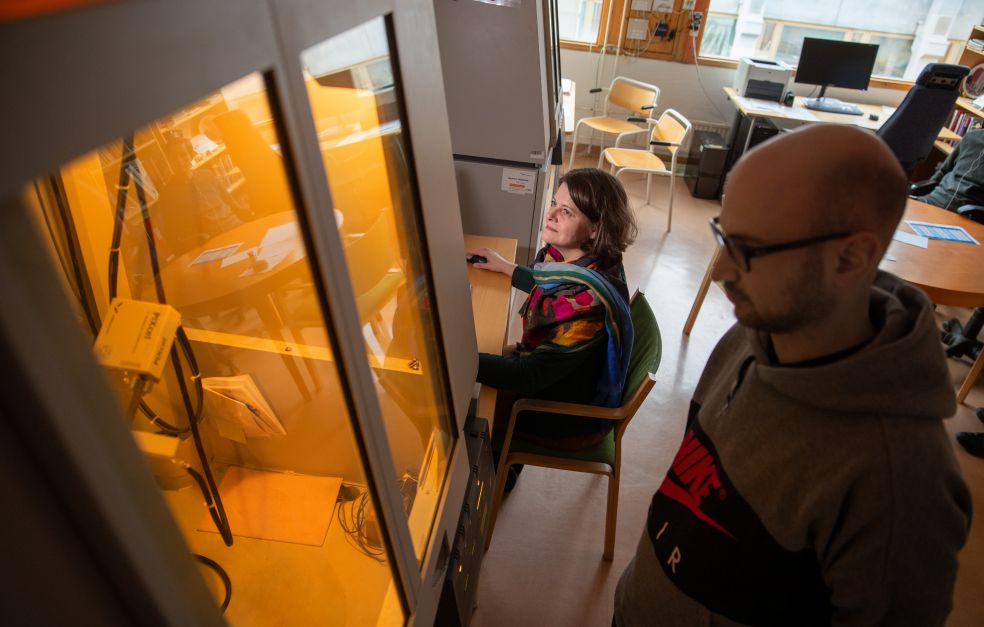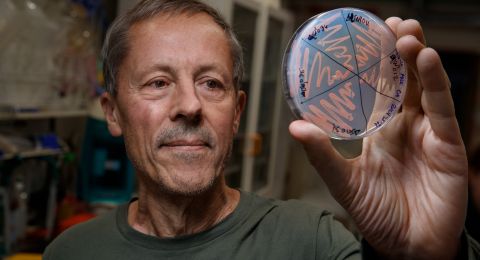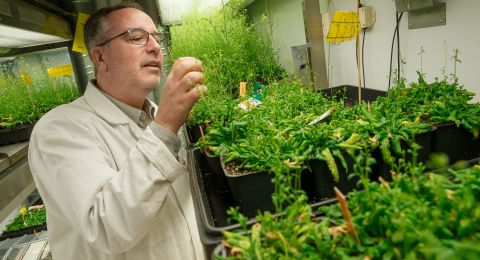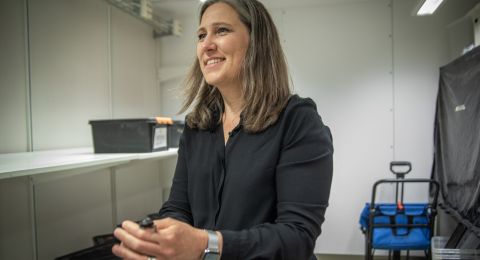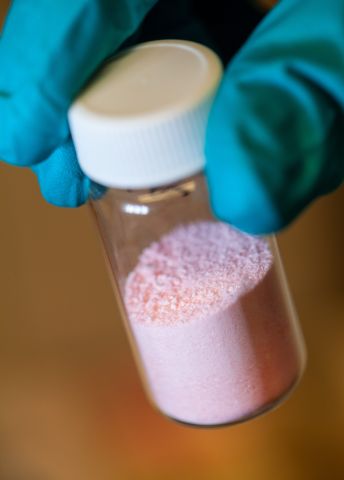
Project Grant 2019
Access to potent medical drugs through polymorph-specific crystallization enabled by ionic liquids
Principal investigator:
Professor Anja-Verena Mudring
Co-investigators:
Mattias Edén
Alexander Lyubartsev
Belén Martín Matute
Xiaodong Zou
Institution:
Stockholm University
Grant iin SEK:
SEK 33 million over five years
The environmental debate on hazardous chemicals gathered pace in the 1960s with the publication of Rachel Carson’s book Silent Spring. One topic discussed in the book was the impact on nature of the pesticide DDT.
The view of chemistry in the minds of the general public has been colored ever since. But Professor Anja-Verena Mudring wants to change this.
“I usually tell my students that we must always maintain a critical view of the way our research findings are used, and be aware of long-term impacts. But I also remind them of the enormous potential that chemistry offers society, and all the positive contributions we can make.”
Drugs of the future are one example of that potential. Mudring is leading a project funded by Knut and Alice Wallenberg Foundation, in which a team of researchers will be finding out whether ionic liquids can replace organic solvents, thereby creating radical new potential for producing drugs of the future.
“Underlying this need is the challenge to health care systems posed by an ageing population. We see a pressing global need to develop new and more effective drugs to combat diseases linked to old age, and to factors such as an unhealthy diet and a sedentary lifestyle.”
New active substances
A key step in developing drugs is to devise new active substances. The active substance must cause the desired biological effects in the human body. But scientists must also find the best way to administer the substances, for example in tablet form or as an injection.
To create a form of the drug that the body is capable of ingesting in the right way, the active substance must be crystallized using organic solvents.
“That process currently involves difficulties and limitations, and we hope our research into ionic liquids will help to bring about a breakthrough.”
Like Lego
Ionic liquids possess unique properties that make them excellent candidates for use as solvents in green and sustainable chemistry. Simply put, ionic liquids can be described as salts that are liquid at room temperature. This may be compared with kitchen salt, which melts at 800 degrees Celsius.
Ionic liquids consist of large organic building blocks that are positively and negatively charged in the form of cations and anions.
“It’s a bit like Lego. You can take a red brick, a green one or a blue, and combine them any way you like. It’s an almost infinite playground for chemists,” Mudring explains.
The researchers now want to examine the unexplored potential offered by ionic liquids. The idea is to equip the cations and anions in the ionic liquids with different functionalities to create an interaction between the ionic liquids and the active pharmaceutical substance. Properties that can be influenced include melting point and viscosity.
“Ideally we want to be able to tailor the structure of the ionic liquids to control the crystallization of the active substance in a way that can’t be done using organic solvents.”
Greener and safer
The research offers the prospect of innovative drugs, and also paves the way for a more environmentally friendly manufacturing process. Mudring elaborates:
“Many organic solvents are toxic, and spillages put workers at risk, for instance when chemicals are released into the air they breathe or if there is a gas explosion.”
Ionic liquids are odorless and easier to control. They cannot catch fire, so chemical processes become safer.
The project is being conducted in a scientific environment that Anja-Verena likens to a true “chemistry hub”. She joined Stockholm University in 2016 after researching at Iowa State University and Ames Laboratory at the U.S. Department of Energy. She wasted no time in starting to discuss research ideas with her new colleagues.
“We evaluated our strengths, and discovered that they truly complement each other. We have a very broad spectrum of expertise gathered in one place.”
Also involved in the project is Belén Martín Matute, specializing in organic synthesis, Alexander Lyubartsev, who does the modeling, along with Xiaodong Zou and Mattias Edén, who are studying how ionic liquids interact with active substances.
A new dimension
There are about 50 common solvents in use today. This is a small number compared with the myriad ionic liquids, where each combination constitutes a separate material. Studying them takes a long time, and producing molecules is also time-consuming, but for the chemists it is like entering a new world.
“The multitude of ionic liquids opens up a whole new dimension, with implications for other fields,” Mudring enthuses.
The team’s new findings may benefit food manufacturing, and the development of new and healthier food additives. Other applications include energy storage, and new ways of manufacturing hydrogen gas by splitting water using sunlight and suitable photocatalysts, created using ionic liquids.
“We are building a new fundamental understanding piece by piece. The aim is to use green chemistry to optimize materials as a contribution to improving our quality of life.”
Text Nils Johan Tjärnlund
Translation Maxwell Arding
Photo Magnus Bergström
